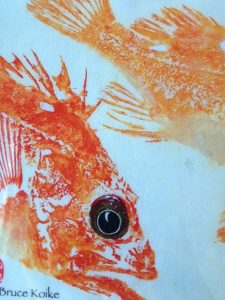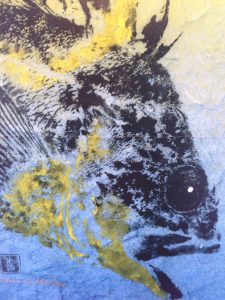 I spent last week alongside several hundred fisheries scientists and managers at the 2016 Western Groundfish conference in Newport, OR, and want to share several highlights and thoughts.
I spent last week alongside several hundred fisheries scientists and managers at the 2016 Western Groundfish conference in Newport, OR, and want to share several highlights and thoughts.
First, I’m accustomed to conferences with multiple concurrent sessions and several talks in each time slot that I want to attend. Western Groundfish has only one session (no tough choices on which talk to attend!) and every talk is relevant because everyone is presenting studies West Coast groundfish! I really appreciated this structure, especially as it was combined with ample time built into the schedule for networking and informal learning.
Second, one of the things that stood out from the conference was number of papers presented that had resulted from a government/academic collaboration. UCSC Long Marine Lab is very lucky to share a campus with the NMFS Southwest Fisheries Science Center, and I can always do a better job taking advantage of this resource. Many Western Groundfish attendees – fisheries scientists who have worked in the field since before I was born – showed extreme willingness to assist and mentor students in the field. I have 5+ emails to send today sharing resources, thanking individuals who have already sent me papers and helpful NMFS reports, and following-up with scientists who expressed willingness to assist me with an analysis that I’m currently working on. I can only hope that this experience has fostered friendships that could lead to future scientific collaborations.
Third, and relevant to my work, it seems that everyone else in the groundfish science world took the 2015 description of Deacon Rockfish (Sebastes diaconus) to heart (Frable et al 2015). I need to be considering my blue rockfish samples to be comprised of two separate species (Sebastes mystinus and S. diaconus) and will do this moving forward. (Note: this is one of the MANY pieces of information I took away from the conference that related directly to my dissertation work).
Finally, I wanted to use this conference as an opportunity to put real thought into whether I would be interested in a government post-doc or full-time position following my Ph.D. Leaving the conference I’m still not entirely sure, but do have some new thoughts. I’m often hesitant to fully commit to an interest in working for the government because of the bureaucracy that I’ve witnessed in government agencies in the past. I come away from Western Groundfish with a strong sense of the passion and excitement of those who study and manage our groundfish stocks, despite the bureaucracy they deal with. Though one often hears about the frustrations of government employment, no one can dispute the quality of science being done at the NOAA NMFS (National Marine Fisheries Service), and this was resoundingly clear over the past week.
Add to all of that beautiful Gyotaku (fish rubbing) art by Bruce Koike (images in this post), a bluegrass band and Rogue brews for our Western Groundfish-sponsored rockfish party at the Newport Aquarium, and the beautiful Oregon coast. It was an incredible week spent with talented and hardworking scientists and managers. Western Groundfish takes place every two years, and 2018 is scheduled to be held in the Monterey Bay area. I’ll be there.
 .
. 